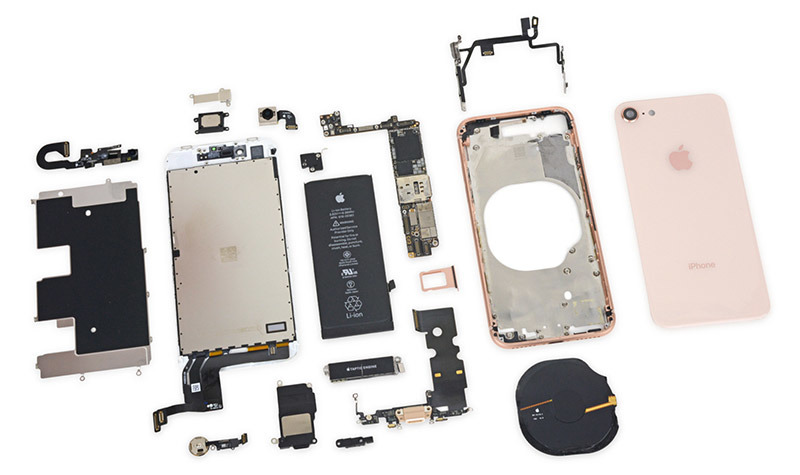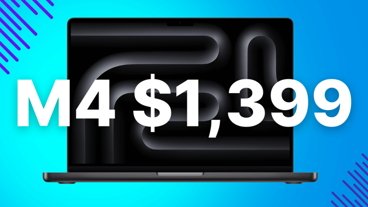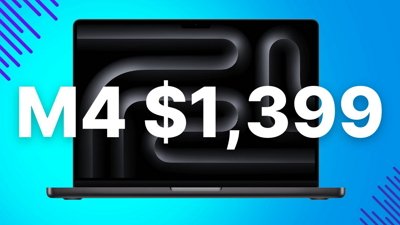Apple CEO Tim Cook has repeatedly dismissed bill of material estimates as incorrect, but that's not stopping research firm IHS Markit to share its latest findings with industry analysts. This year, the firm estimates Apple spends $247.51 on the components that comprise one 4.7-inch iPhone 8 with 64GB of storage.
The estimate, which only accounts for hardware, not manufacturing, software and R&D, represents about 35 percent of iPhone 8's $699 sale price, reports Bloomberg. That figure is nearly identical to last year's iPhone 7, which carried an estimated $237.94 BOM, but came equipped with 32GB of flash memory.
The larger 5.5-inch iPhone 8 Plus boasts a BOM of $288.08, up from $270.88 with the iPhone 7 Plus, according to IHS. Along with a larger screen, the additional spend can be attributed to a revamped dual-camera array that costs $32.50. Like the iPhone 7 Plus, the iPhone 8 Plus incorporates an optical image stabilization system for only one rear camera — the wide angle module. Apple's upcoming iPhone X features OIS on both wide and telephoto lensers.
Aside from a bump in storage and camera equipment, Apple made improvements to the handset's processing capabilities with the all new A11 Bionic system-on-chip.
Unveiled at a special media event earlier this month, Apple's iPhone 8 with A11 Bionic is an applications processor powerhouse that blows away its mobile chip forebears, and even matches low-end MacBook Pro models in certain benchmarks. Notably, the SoC is Apple's first to boast an in-house designed GPU.
The extra processing horsepower runs a $5 premium over last year's A10 Fusion SoC, which the firm pegged at $26.90.
As usual, the display and mechanical enclosures top the list as iPhone 8's most expensive components. This year Apple introduced True Tone display technology to iPhone, as well as a glass backing to enable inductive charging.
The IHS estimates should be taken with a healthy dose of skepticism. Cook has in the past denounced supply chain guesstimates, saying he has never seen a breakdown "that's even close to accurate."
 Mikey Campbell
Mikey Campbell







-m.jpg)






 Christine McKee
Christine McKee
 Malcolm Owen
Malcolm Owen

 Sponsored Content
Sponsored Content

 Amber Neely
Amber Neely











22 Comments
It’s well known in manufacturing that the cost of the product should be about 1/3 and no more than 1/2 the cost of the finished product. Sounds like Apple follows this pattern. Keep in mind they must pay for R+D, tooling, development, logistics, support, marketing, internationalization, shipping, support, customer service, insurances, trade, lobbying, etc...
Of course - that’s the cost of the parts, period!!
now, let’s include assembly and shipping costs, packaging, duty, fedex to send it here, design and development, stock people, rent and so much more. Their margins are high because they sell a lot of phones. If their sales are 50%, the margins will fall.
As for me, I feel very lucky that some spent a billion dollars to develop a 800.00 phone for me and gives me free updates, free cloud account, very few reasons to ask for support, and a product which is always improving in so many ways without raising the price too much.
Compared to a PC, this phone is a bargin at twice the price.
The part break downs are meaningless. It's like saying pills are cheap to make. So who wants to pay for the first pill.
So, it’s obviously completely true that there is so much more to pay for than just the parts of the device, but it’s not like Apple is designing and developing a new product (as in totally new) each year - the iterative development means incremental development costs and all the others that are amortized over a number of years as well as across product lines. Apple is steadily making more off of each IPhone year after year - at least according to my magic tome of knowledge ;-)